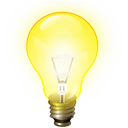Arguments For & Against
Early Learning

“Babies cannot be taught…”
The arguments of David Elkind in the essay Much Too Early!, and BrillBaby’s response:
David Elkind:
The logical structure of reading and math requires syllogistic reasoning abilities on the part of the child. In as much as most young children do not attain this form of reasoning until the age of five or six, it makes little sense to introduce formal instruction in reading and math until then.
BrillBaby’s response:

Children demonstrably can read and do math before the age of five, provided they have been taught. Some examples are given in the next answer, below. But to digress briefly, let’s discuss the phrase “formal instruction,” which has some negative connotations when applied to babies.
If by “formal instruction,” the authors mean that students are pressured to learn and retain specific information, then this is something we would oppose in principle. The aim of baby education is not to impart specific facts to a child, but rather to stimulate the child’s brain, thereby facilitating learning at an earlier age, when it is easier.
If lessons are given at home, then they should take the form of short games and only be given when the child is receptive. If lessons are given at a learning center, then parents should attend some, if not all, their baby’s classes in order to assess their quality and appropriateness.
If by “formal instruction,” the authors mean simply that there is a teacher delivering lessons, then the important thing is the teaching style and how the students respond to it. If the teacher keeps the lessons fun and upbeat, and the children are enjoying themselves, then there is a lot to be said for teaching reading or math at a young age. For your child to have positive associations with these subjects before starting school is a tremendous gift.
David Elkind:
Those who believe in academic training for very young children make a fundamental error: they fail to recognize that there are different levels of understanding in math and reading. Learning to identify numbers and letters is far different from learning to perform mathematical operations and to read with understanding… It is only at age six or seven… that children can construct the concept of a “unit”… Mathematical operations like addition, subtraction and multiplication can be performed only on numbers that represent units that can be manipulated without reference to particular things.
BrillBaby’s response:

People who believe that very young children are unable to understand the meanings of written words make a fundamental error: they completely underestimate the cognitive abilities of such children.
We have videos (and there are numerous others on YouTube) to prove that children aged 12 months or younger understand the meanings of many words.
As for math, there are videos on YouTube that show toddlers perceiving quantity without counting, as described by Glenn Doman. Meanwhile, Shichida Academy children aged two and younger can perform addition, subtraction, multiplication and division involving three-digit figures without a calculator – something most adults never learn to do. It is only by teaching at such a young age that it is possible to tap into this ability, which relies on the right brain.
The reason that most children cannot do math until the age of six or seven is because they have only received left-brain education. In left-brain math, logic is used to deduce the solution to a problem. In right-brain math, the solution comes to the child instantaneously, without recourse to the logical brain. This is why very young children can perform mathematical operations without having constructed Elkind’s “concept of a unit.”
Want to join the debate about early learning?

You can share your views with other parents and teachers in the BrillKids’ Forum (not available at the moment).
If there is an argument that you feel hasn’t been covered on BrillBaby, please email us and we’ll do our best to address your concern.
On to the next argument, “Teaching will harm the child…”